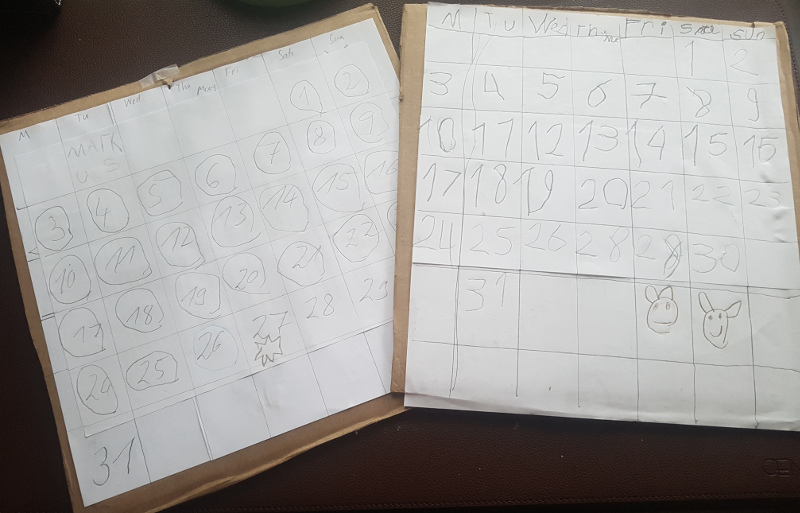
One of the most valuable skills to learn and practice is time management. I have long been a proponent of David Allen’s Getting Things Done.
However valuable the skill may be, the question arises how and how early to you start to teach it to kids. Many
people never learn it, forget, or start practicing it seriously in or after their college days. I thought how can
we bring this home effectively at an early age. While temporal perception is seriously skewed in children compared
to adults there is a gradual approach to teach them time management.
Both of my kids go to a Montessori school. This method embraces
in later years the practice of self-paced learning.
Students usually discuss their weekly assignments with their teachers and then have to plan the week out by themselves.
In order to prevent slack or over-commitment, there are checkpoints scheduled throughout the week. Rather than a
top-down teaching style, this model embraces self-direction at a very early age. Usually, in Casa, they first become
exposed to a calendar. Unfortunately, thanks to the pandemic and endless
lockdowns, my son only got half the Casa experience. The rest, however ambitious, had to be made do with Zoom calls
and remote work. The kids would be instructed to build a small calendar out of cardboard. At the beginning of the month,
they would fill in the upcoming events and birthdays. That way they slowly develop a sense of time as in past, current,
and future events.

The other source of learning time management is Japanese kid workbooks. My mother-in-law subscribed to Shimajirou for
both of my kids. Once a month we get a care package from Japan with kids’ magazines. In contrast to western curricula,
Japan seems to be obsessed with teaching kids fine-grain time control to the minute. At the time they learn the first
two phonetic alphabets they are expected to master analogue clocks. I was probably in primary school when I got my first
watch. I do not remember my school curriculum, but I vividly remember how one kid was elected to call out the full hour
at the end of the day for extended care to notify the kids to go home, or how we had these shabby Soviet-style watches
next pictures of Erich Honecker on every school floor. A few years later
when the country with the “only real existing Socialism” ended, it was
hip to have those digital Casio watches as a kid. Fast forward, to my
surprise, I yet to find a kid that knows how to read clocks as of late primary school. Maybe the digital Casio disease
spread further than just the german unification.
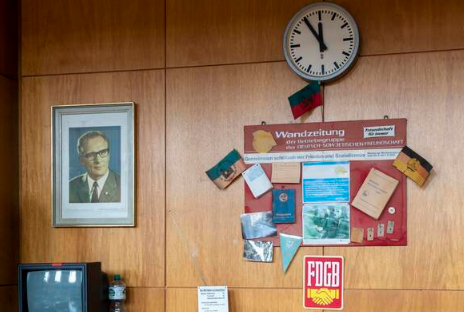
So shortly after we went over the first few workbooks, I got my son a Ghostbusters watch (from Aliexpress). A couple of
months later he also got a time-of-day trainer from Shimajirou from Japan as part of the care package. This Japanese Tiger really wants to drill time management into kids.
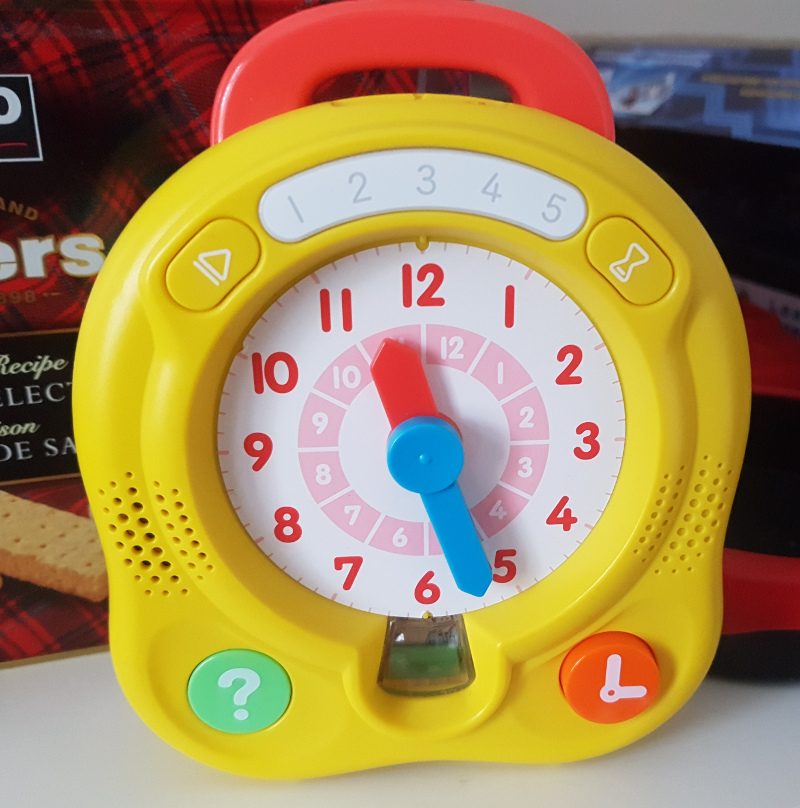
While many parents, I am sure, would leave it at that and deflect the responsibility to the school, or consider the
problem solved with a dedicated tool, I really began to worry about the practical implementation. So for my son’s sixth
birthday, I got him a planner. First, the idea was ridiculed, but it started to pay dividends when this gift started to
work hand in hand with other gifts. He also got a Seamonkey set from someone else.
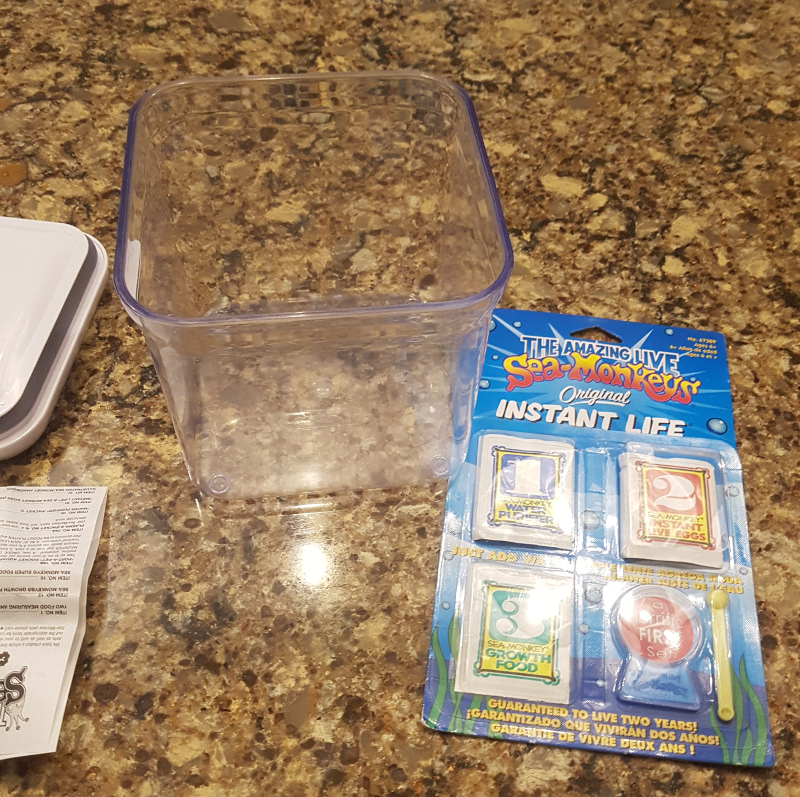
So the feeding schedule, expected hatching, and other care tasks started becoming an excellent problem set to get into
weekly planning. In addition to scheduling, the planner got a lot of appeal for its lock. As soon as the kid believes
he has something special or secret the appeal of the item is magnified. I am sure by now, he is so excited that all
neighbour kids know the lock combination.
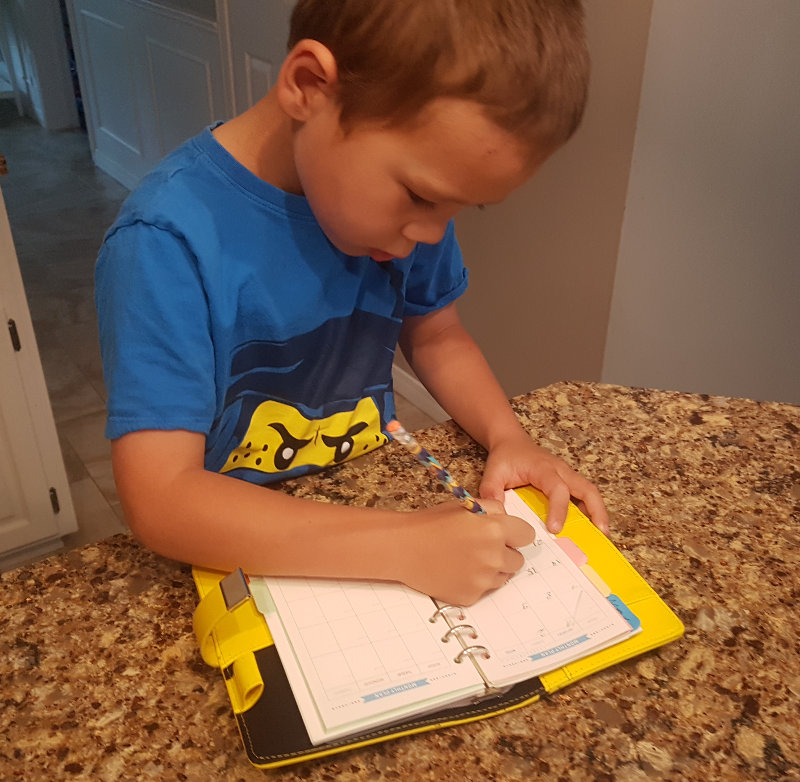
Also, keep broken watches around. I usually have my watch for events, Grand Seiko Spring Drive GMT,
and one for work.
My work watch is supposed to be able to take punishment from exercise or bike commute in extreme weather, be able to
handle some smacks against rails of a playground when watching kids, and not be too expensive to replace when it
actually breaks. For about 20 years, I had an Aeromatic 1912 from Germany that did good service. However, after biking
several winters in the snow, with extreme Canadian temperature events, it started to fog and the low-end Miyota movement
eventually gave up. I would call it a design flaw, the inside air volume was too big to give rise to condensation. I
gave this watch to my little ones. We use it to tell time. It had a brief stint as decoration in my daughter’s toy
Elsa palace before it migrated as a teaching tool into the kitchen drawer. Btw, the new work watch is a Vostok Kommandirskie. I do not think this one is ever going to fail me in
reliability.
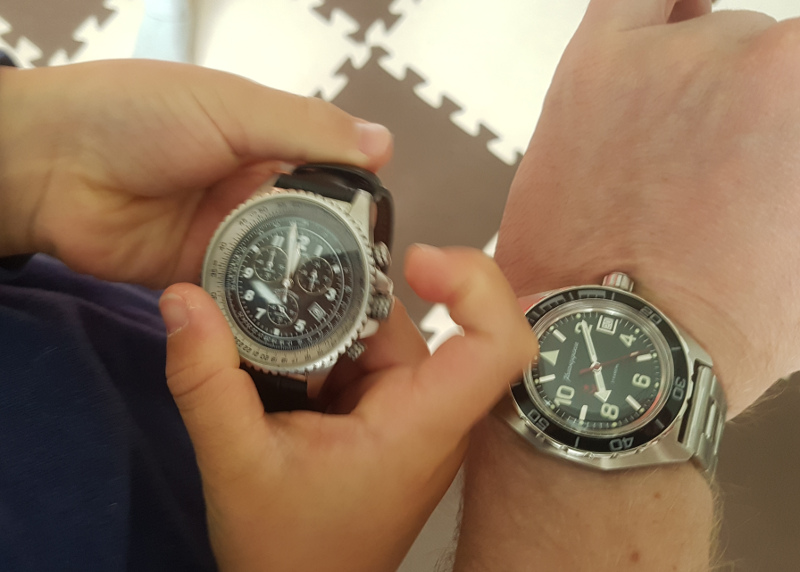
Based on experience, daily planning with a calendar seems to be the first viable step to get them into time management.
Birthdays, events, distinguishing weekends from weekdays, and giving them a day count is probably easier learnt than a
watch. Once the monthly calendar is somewhat established, weekly planning related to projects and pets becomes easier.
At this point, it probably makes sense to introduce the clock for telling time or expiry timers for certain tasks like
cleaning up the playroom. The next stacking block are timed events in a day, eventually self-paced routines and
checklists.
2021-05-26
Updated : 2025-10-04
Not a spam bot? Want to leave comments or provide editorial guidance? Please click any
of the social links below and make an effort to connect. I promise I read all messages and
will respond at my choosing.